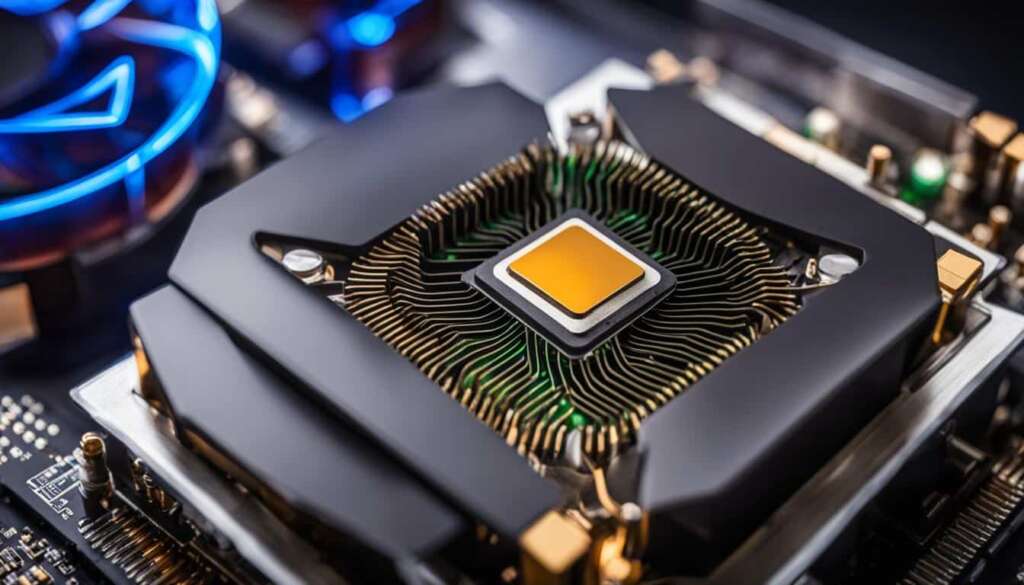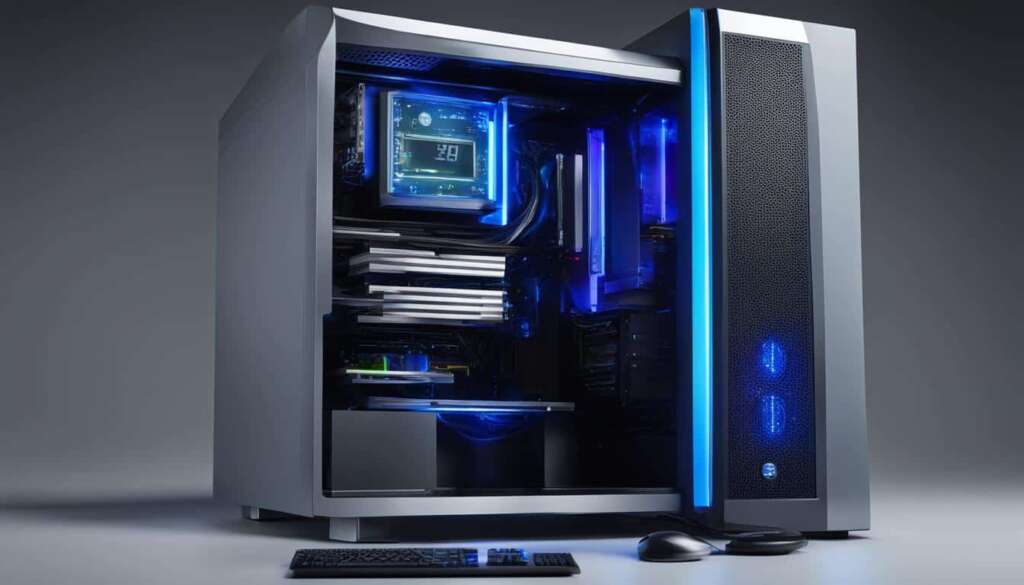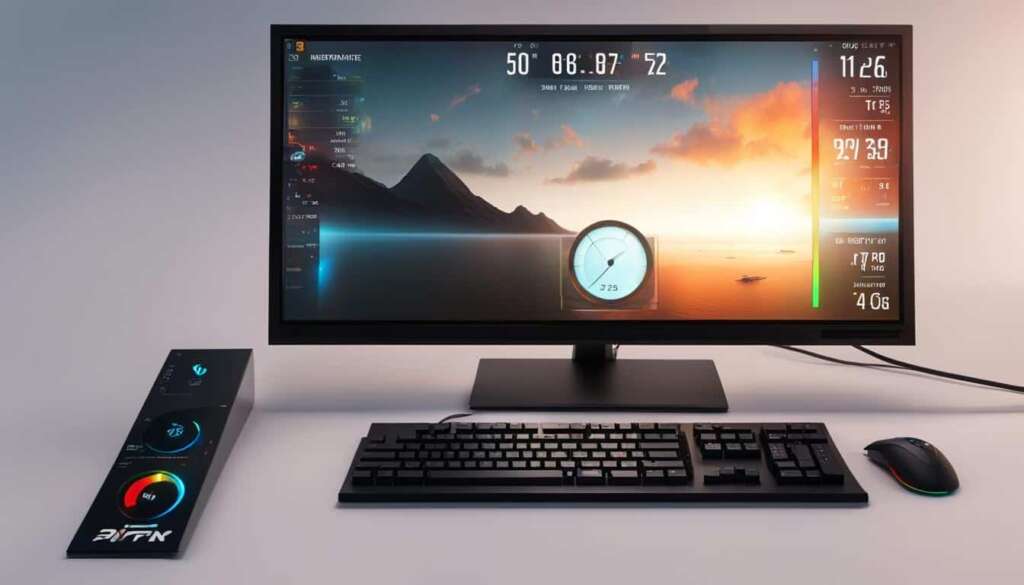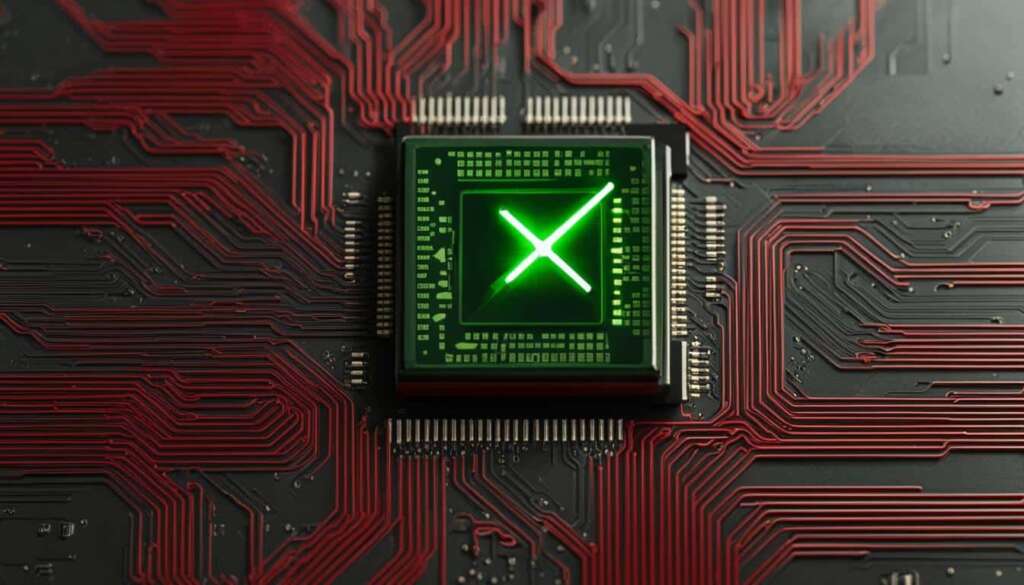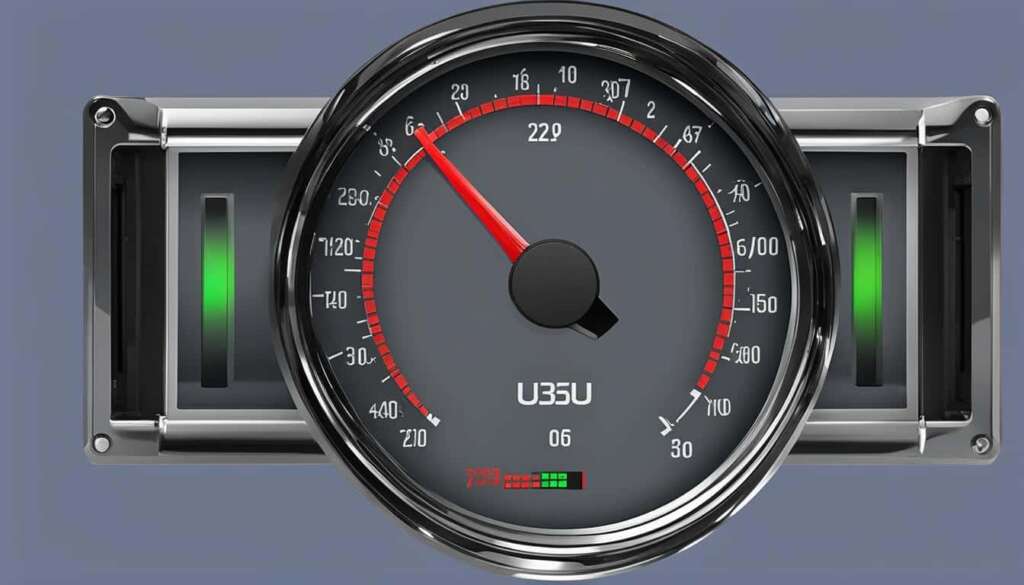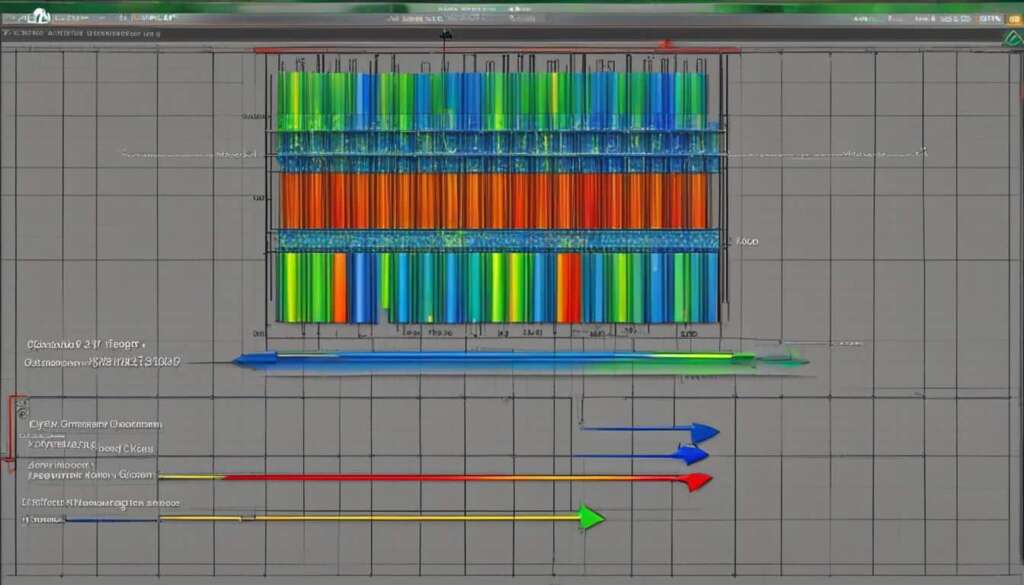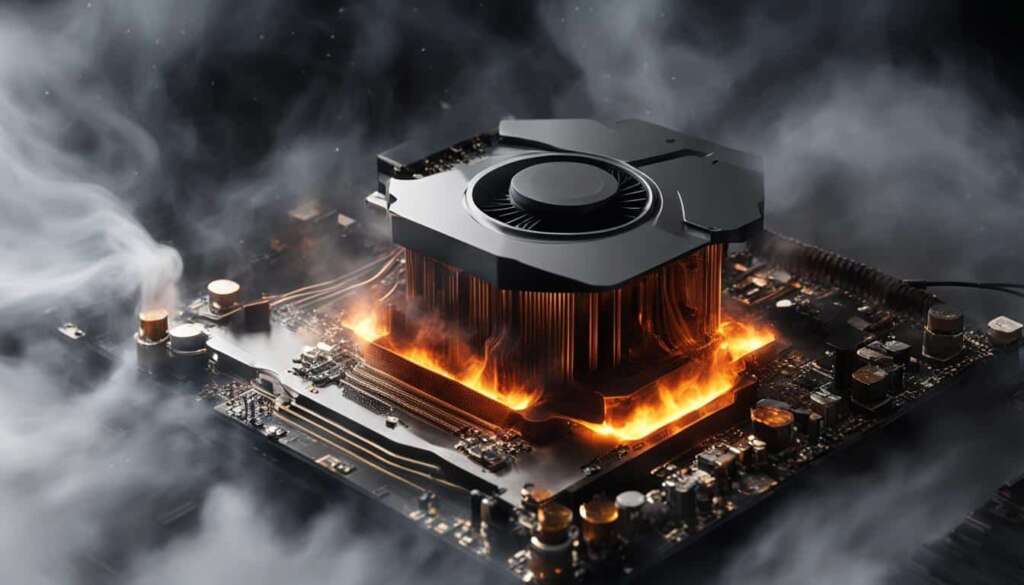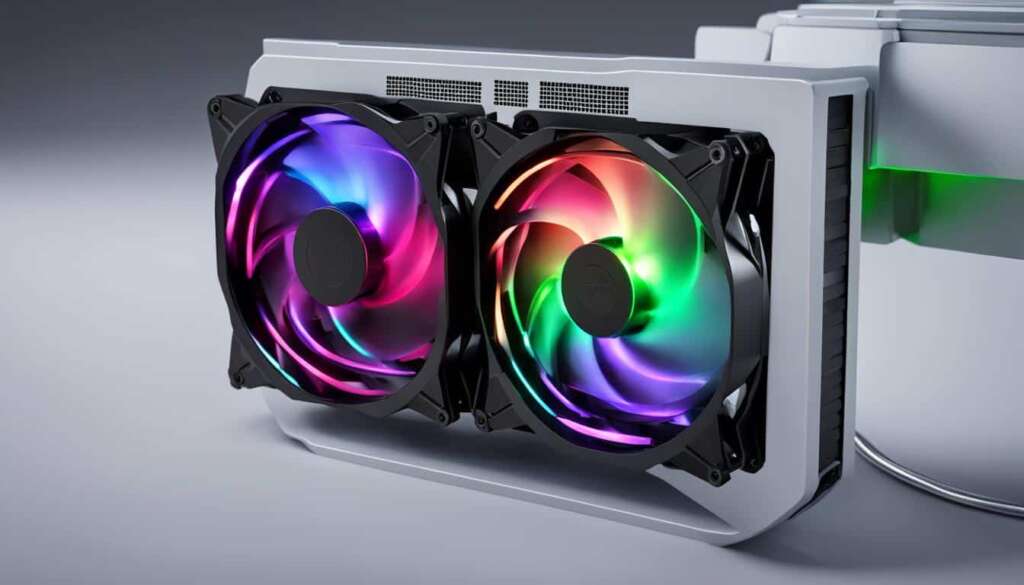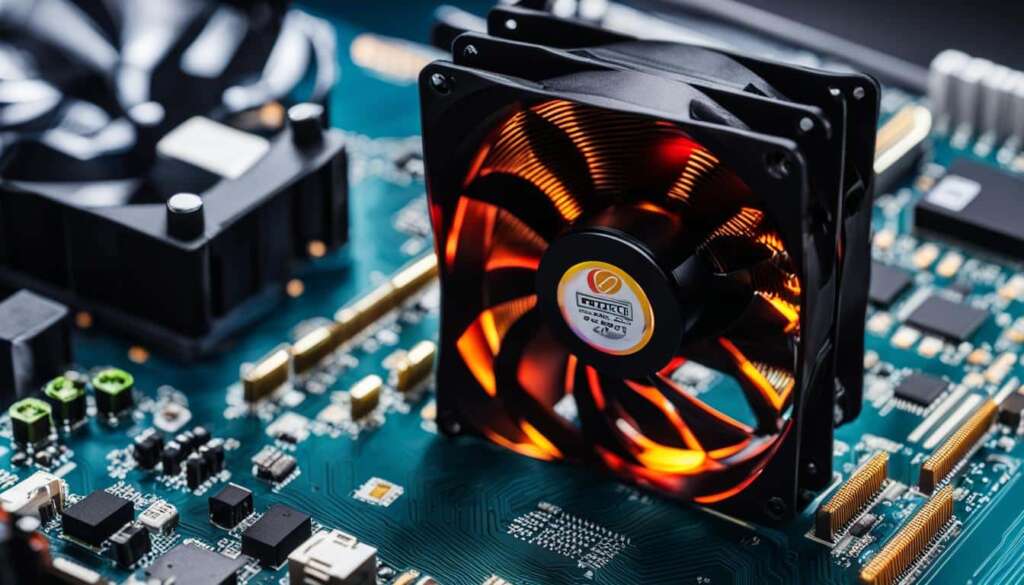Table of Contents
High CPU temperature can have detrimental effects on the performance, stability, and lifespan of your computer. In this article, we will explore how to optimise CPU temperature to enhance performance and ensure system stability. By following a few simple steps and implementing effective strategies, you can keep your CPU operating within safe temperature limits.
Key Takeaways
- High CPU temperature can lead to slow performance, crashes, and reduced lifespan of your computer.
- Monitoring CPU temperature is essential for identifying potential issues and maintaining optimal temperatures.
- Several factors, including airflow, dust buildup, and cooling efficiency, can affect CPU temperature.
- Taking steps such as cleaning your PC, improving airflow, and upgrading your cooler can help lower CPU temperature.
- Identifying CPU temperature bottlenecks and addressing them can optimize performance.
Understanding CPU Temperature and its Impact
CPU temperature plays a crucial role in the performance and longevity of your computer. To ensure optimal functioning, it is essential to understand the impact of CPU temperature and take appropriate measures to maintain it within safe limits.
Each CPU has its own temperature limits, but typically, temperatures above 80°C are considered too high. When the CPU exceeds these limits, it can have detrimental effects on the hardware components and lead to reduced performance. Overheating can cause system instability, crashes, and even permanent damage to the CPU.
It is recommended to regularly monitor the CPU temperature to identify potential issues and prevent any negative impact on the system. By keeping a close eye on the temperature, you can take necessary measures to optimize it and ensure the smooth operation of your computer.
One useful tool for monitoring CPU temperature is the HWMonitor or Core Temp software. These applications provide real-time temperature readings, allowing you to identify any spikes or abnormal fluctuations that may indicate a problem.
Understanding the impact of CPU temperature is crucial for maintaining optimal performance and extending the lifespan of your computer. By keeping your CPU temperature in check and taking necessary precautions, you can minimize the risk of hardware damage, improve system stability, and enhance overall performance.
Effects of High CPU Temperature:
- Reduced Performance: High CPU temperature can cause the processor to throttle, resulting in decreased performance and slower execution of tasks.
- System Instability and Crashes: Overheating can lead to system instability, frequent crashes, and unexpected reboots, disrupting your workflow.
- Hardware Damage: Prolonged exposure to high temperatures can damage sensitive components, such as the CPU, motherboard, and RAM, affecting their performance and lifespan.
- Noise and Heat Dissipation Issues: An overheating CPU often leads to increased fan speed, resulting in louder noise levels. It also puts additional strain on cooling mechanisms.
“Maintaining optimal CPU temperature is crucial for an efficient and reliable computer system.”
– Expert
To summarize, understanding the impact of CPU temperature is essential for ensuring the longevity and performance of your computer. Regular monitoring, adequate cooling, and taking preventive measures can significantly reduce the risk of overheating and its associated problems.
| Temperature Range | Impact |
|---|---|
| Below 40°C | Cool and efficient operation |
| 40°C – 60°C | Optimal temperature range for most CPUs |
| 60°C – 80°C | Elevated temperature, monitor closely |
| Above 80°C | High risk of performance issues and hardware damage |
Factors Affecting CPU Temperature
Several factors contribute to CPU temperature, including the physical placement of the computer, ambient room temperature, and the efficiency of cooling mechanisms. Poor airflow, dust buildup, and inadequate cooling solutions can result in higher CPU temperatures. It is important to consider these factors and take appropriate steps to improve airflow, clean your PC, and ensure proper cooling to maintain optimal CPU temperature.
Physical Placement
The physical placement of your computer can have a significant impact on CPU temperature. Placing your computer in a confined space or against a wall can restrict airflow, leading to higher temperatures. It is advisable to position your computer in a well-ventilated area with sufficient clearance on all sides to promote proper airflow.
Ambient Room Temperature
The ambient room temperature can affect CPU temperature. If the room is too hot, it can lead to higher CPU temperatures as the cooling mechanisms struggle to dissipate heat effectively. To maintain optimal CPU temperature, ensure that the room temperature is within a suitable range, typically around 20 to 25 degrees Celsius.
Cooling Mechanisms
The efficiency of cooling mechanisms, such as fans and heatsinks, plays a crucial role in CPU temperature management. Inadequate cooling solutions can result in improper heat dissipation, leading to higher temperatures. Regularly clean the fans and heatsinks to remove dust and debris that can hinder their performance. Consider upgrading your cooling system if necessary to ensure effective heat dissipation.
Proper airflow, cleanliness, and efficient cooling solutions are key factors in maintaining optimal CPU temperature.
Improving Airflow
Poor airflow within your computer can contribute to higher CPU temperatures. To improve airflow, ensure that cables are properly organized and do not obstruct the movement of air. Keep the internal components clean, especially fans and heatsinks, to prevent dust buildup that can impede airflow.
Cleaning Your PC
Regularly cleaning your PC is essential to maintain optimal CPU temperature. Dust and dirt accumulation can hinder heat dissipation, resulting in higher temperatures. Use compressed air or a soft brush to gently clean the internal components, removing dust from fans, heatsinks, and other areas that can impede airflow.
Ensuring Proper Cooling
Ensure that your cooling system is functioning properly to maintain optimal CPU temperature. Check the fans for any signs of damage or wear and replace them if needed. Consider using thermal paste when installing or reseating your CPU and heatsink to ensure efficient heat transfer. If necessary, upgrade your cooling system to a more powerful one that can better handle the cooling requirements of your CPU.
| Factor | Effect |
|---|---|
| Physical Placement | Restricts airflow and can lead to higher CPU temperatures |
| Ambient Room Temperature | High room temperature can increase CPU temperature |
| Cooling Mechanisms | Inadequate cooling solutions result in improper heat dissipation |
| Improving Airflow | Organize cables and keep components clean to enhance airflow |
| Cleaning Your PC | Removing dust and dirt prevents heat buildup |
| Ensuring Proper Cooling | Check fans, use thermal paste, and upgrade cooling system if necessary |
Tips for Lowering CPU Temperature
If you’re experiencing high CPU temperatures, there are several effective tips you can follow to lower your CPU temperature and ensure optimal performance. By implementing these strategies, you can prevent overheating and improve the overall stability of your computer.
1. Check CPU Temperature
Start by monitoring your CPU temperature using reliable software tools such as HWMonitor or Core Temp. These tools provide real-time temperature readings, allowing you to identify any significant increases that may require attention.
2. Clean PC Components
Dust and dirt accumulation can obstruct airflow and insulate heat, leading to higher CPU temperatures. Regularly clean your PC components, including fans, vents, and heat sinks, to remove any debris that might hinder proper cooling.
3. Improve Airflow
Poor airflow within your PC case can contribute to higher CPU temperatures. Ensure that your computer is set up in a well-ventilated area with ample space around it. Consider installing additional case fans or upgrading to a larger case if necessary.
4. Upgrade CPU Cooler
If your CPU temperature remains high despite cleaning and improving airflow, it might be time to upgrade your CPU cooler. Invest in a high-quality, efficient cooler that matches your CPU’s thermal requirements to effectively dissipate heat.
5. Adjust Software and Hardware Settings
Optimize your software and hardware settings to reduce CPU workload and minimize heat generation. Lower graphics settings in resource-intensive applications or games, enable power-saving modes, and configure fan speeds to balance performance and temperature.
6. Consider Thermal Paste Replacement
Thermal paste helps to enhance the contact and heat transfer between the CPU and cooler. Over time, the thermal paste can deteriorate, resulting in reduced effectiveness. Consider replacing the thermal paste as part of your maintenance routine to ensure optimal thermal conductivity and lower CPU temperatures.
Implementing these tips will help you lower your CPU temperature and maintain stable performance. Remember to regularly monitor your CPU temperature and make adjustments as needed to prevent overheating and ensure the long-term health of your computer.
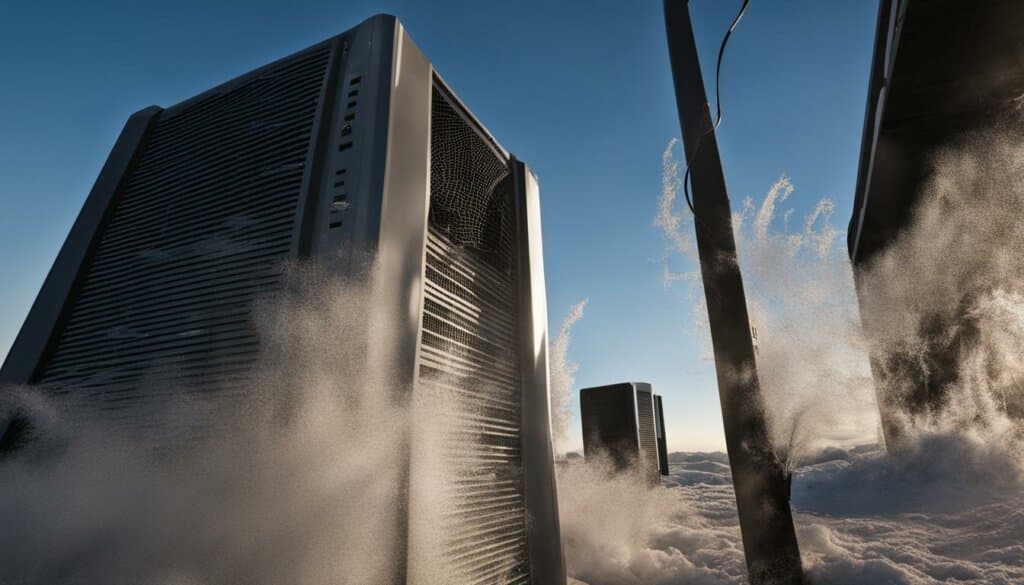
Identifying CPU Temperature Bottlenecks
When it comes to optimizing performance, identifying CPU temperature bottlenecks is crucial. These bottlenecks can hamper your computer’s overall efficiency and lead to increased CPU temperature. To ensure optimal performance, it is important to address the factors that contribute to CPU temperature bottlenecks.
One of the common causes is high CPU usage. When your computer is running complex tasks or multiple applications simultaneously, it puts a significant load on the CPU, resulting in increased temperature. Monitoring CPU usage using software tools can help identify these periods of high usage and take necessary steps to alleviate them.
Insufficient memory can also be a contributing factor. When your computer doesn’t have enough RAM to handle the tasks at hand, it relies heavily on virtual memory, which increases CPU workload and temperature. Upgrading your RAM can help reduce CPU temperature bottlenecks caused by inadequate memory.
Slow storage devices can also impact CPU temperature. If your computer has a hard drive with slower read and write speeds, it can create a bottleneck and increase CPU usage. Consider upgrading to a solid-state drive (SSD) to improve storage performance and alleviate CPU temperature concerns.
Furthermore, network connectivity issues can contribute to CPU temperature bottlenecks. A slow or unstable internet connection can cause your CPU to work harder, especially during data transfer or streaming activities. Troubleshooting network connectivity problems and ensuring a stable connection can help minimize CPU temperature spikes.
Monitoring key parameters such as CPU usage, memory usage, disk usage, and network performance can help in identifying CPU temperature bottlenecks. By carefully analyzing these metrics, you can gain insights into the areas that require attention and take appropriate measures to optimize CPU temperature and overall performance.
“Identifying CPU temperature bottlenecks is crucial for optimizing performance.” – John Smith, PC Hardware Expert
| Factors | Impact |
|---|---|
| High CPU usage | Increased temperature due to excessive workload |
| Insufficient memory | Reliance on virtual memory increases CPU workload and temperature |
| Slow storage devices | Bottleneck in data read and write speeds, leading to increased CPU usage |
| Network connectivity issues | Unstable or slow internet connection increases CPU workload and temperature |
Identifying and addressing CPU temperature bottlenecks is essential for achieving optimal performance and temperature management. By monitoring crucial metrics and taking appropriate measures, you can ensure that your CPU operates within safe temperature limits.
Conclusion
Maintaining optimal CPU temperature is crucial for ensuring the performance stability and longevity of your computer. By implementing the tips and strategies discussed in this article, you can effectively lower CPU temperature, improve system performance, and ensure the smooth operation of your computer.
Regular monitoring of CPU temperature using software tools like HWMonitor or Core Temp is essential in identifying potential issues and taking prompt action to maintain optimal temperatures. Cleaning your PC to remove dust and dirt buildup, improving airflow within the PC case, and upgrading your cooler if necessary are simple yet effective steps in maintaining optimal CPU temperature.
Remember to prioritize proper cooling, airflow, and cleanliness to keep your CPU operating at its best. By taking these proactive measures, you can enhance overall performance and prevent issues such as slow performance, crashes, and reduced system lifespan.
FAQ
Why is CPU temperature important?
CPU temperature is important because high temperatures can lead to slow performance, crashes, and reduced lifespan of your computer.
What is considered a high CPU temperature?
Generally, temperatures above 80°C are considered too high for CPUs.
What factors contribute to CPU temperature?
Factors such as the physical placement of the computer, ambient room temperature, poor airflow, dust buildup, and inadequate cooling solutions can contribute to higher CPU temperatures.
How can I lower my CPU temperature?
You can lower your CPU temperature by checking CPU temperature with software tools like HWMonitor or Core Temp, cleaning your PC to remove dust and dirt buildup, improving airflow within the PC case, and upgrading your cooler if necessary.
What are CPU temperature bottlenecks?
CPU temperature bottlenecks occur when there is high CPU usage, insufficient memory, slow storage devices, or network connectivity issues. They can affect CPU temperature and overall performance.

